Contents
History of Sennyu-ji Temple
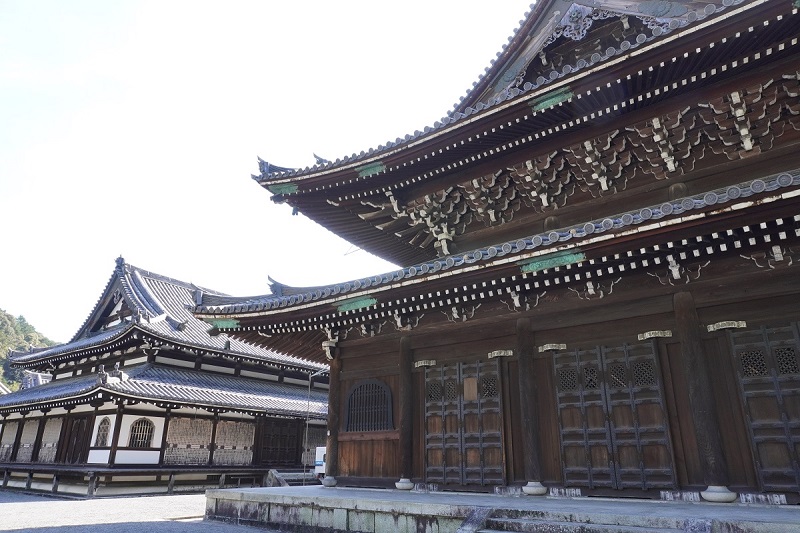
The temple is the grand head temple of Shingon sect Sennyuji-ha. There are various theories about the founding. It was founded in the Heian period and went fading and then the temple was rebuilt by Shunjo in the Kamakura period in 1218. Shunjo went to Song in China for study in 1199, after staying for 12years, he returned to Japan in 1211 and established Hokkyo-ritsu Buddhism. Therefore, he can be called as the founder of Sennyu-ji Temple.
The temple was named Sennyu-ji Temple (It means fountain in Japanese) because clear water springs out from a corner of the temple grounds.
REIMEI-den Hall
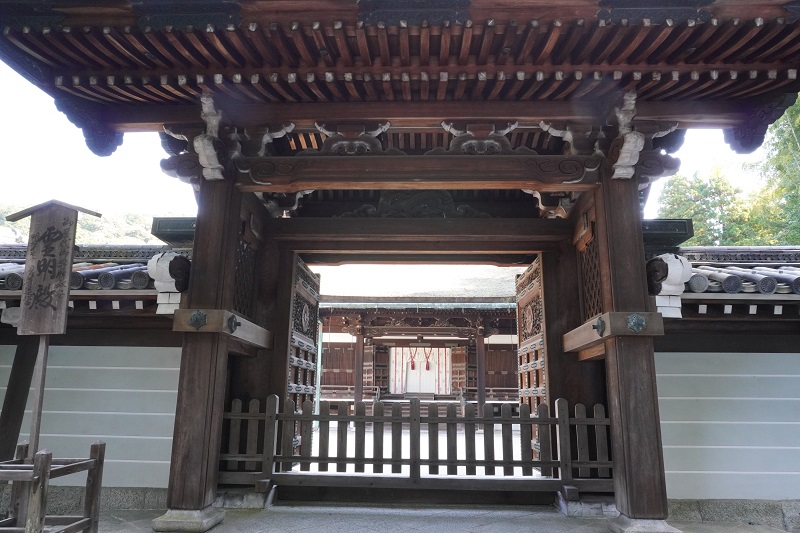
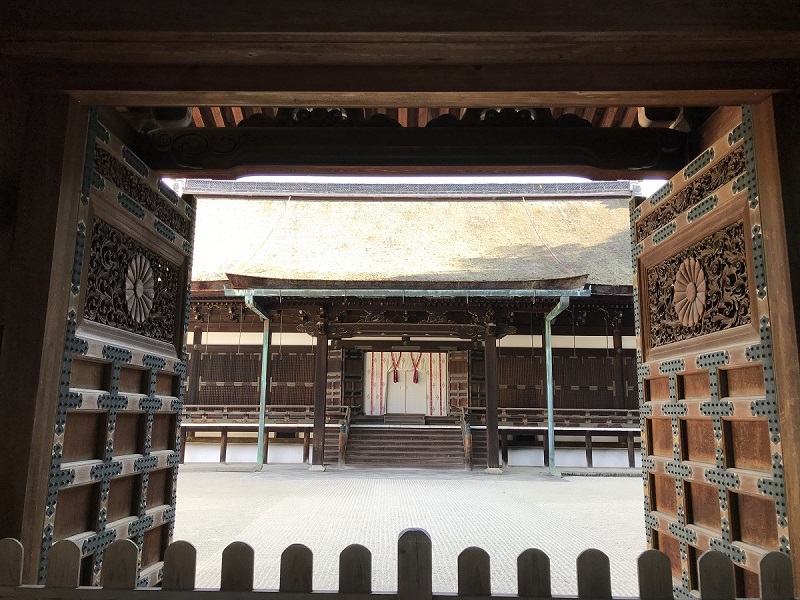
The temple has a close relationship with the Imperial Family. The funeral of Emperor Shijo was held in 1242. After that, it has a deep connection to the Imperial Family, funerals were held for successive emperors and empresses. The mountain tomb was set up in the precincts and is enshrined as “Tsukinowa no Misasagi”, the imperial tomb. The temple was used to called “Mitera” by Emperors.
YOKIHI (Yang Guifei) Kannon-do Hall
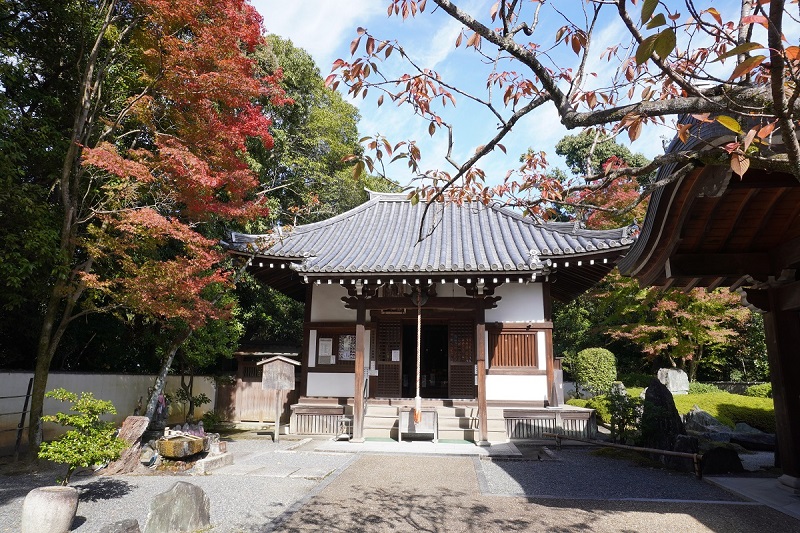
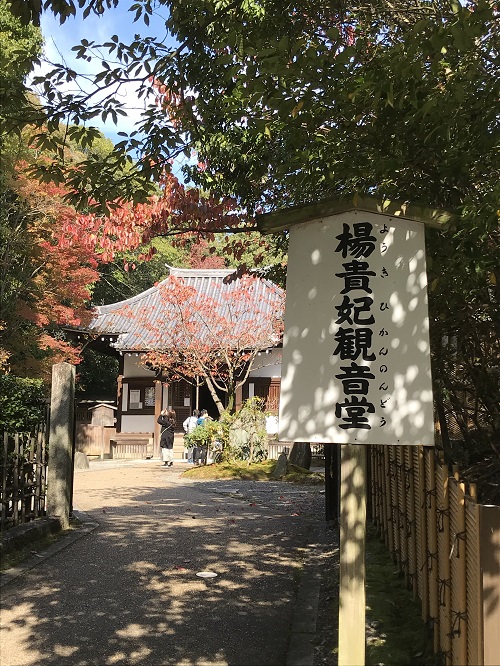
Yang Guifei, the princess of Emperor Xuan Zong of theTang dynasty, is known as a beautiful woman. She passed away in Lushan AN Rebellion in 756. After the war, Emperor Xuan Zong made a Kannon statue in memory of his late princess.
It is said that Shunjo’s disciple, Tankai, who went to China, brought back the statue in 1255 and placed it at Sennyuji Temple. It is enshrined in this Kannon-do Hall. Yokihi Kannon has a beautiful and exotic look. Many women visit as a power spot for beauty.
Buddhist Hall, the principal image
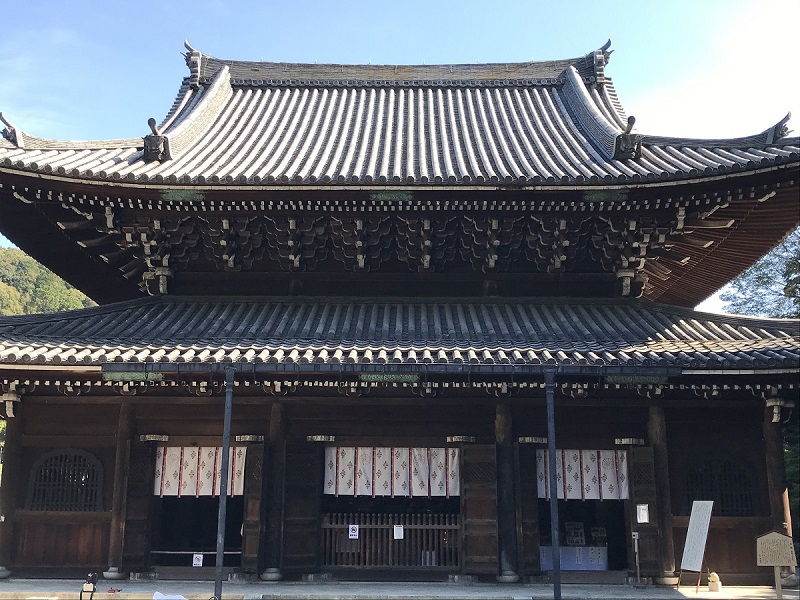
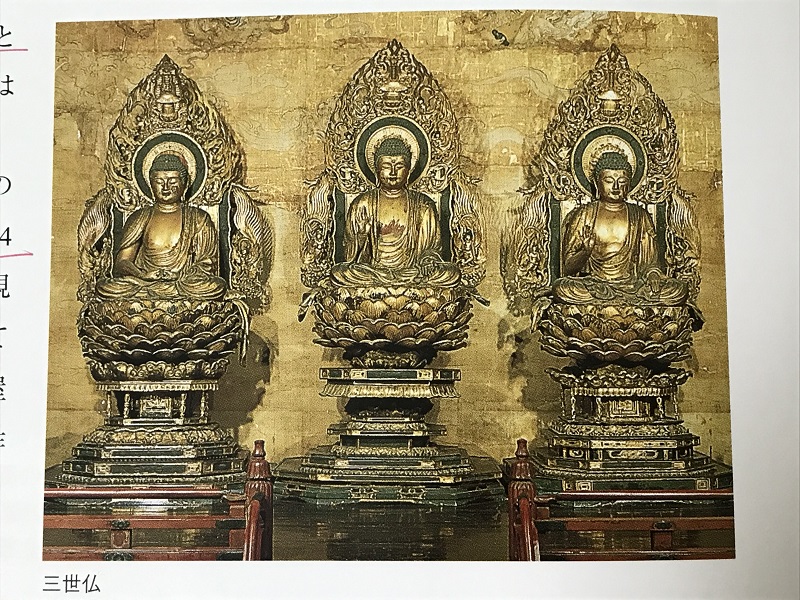
When you enter the gate, you will see the Buddhist Hall in front of the approach. It was burnt down by Onin War and rebuilt in 1668 by Ietsuna Tokugawa, the 4th Tokugawa Shogunate. It is a national important cultural property.
Three Buddha statues representing the past, the present and future are enshrined. It is a rare principal image in the form of Song Buddhism. On the ceiling and the back wall behind the principal image, there are paintings by the famous painter Tanyu Kano in the early Edo period which are also must-sees. In addition, Dai-nehan-zu (painting of the great Nirvana), the largest in Japan, will be released every year from March 14th to 16th.
Gozasho, the imperial office room
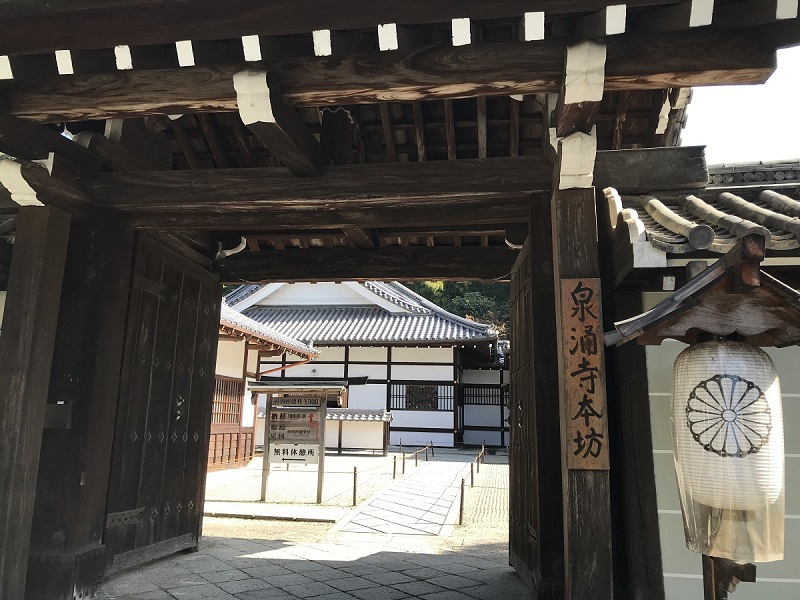
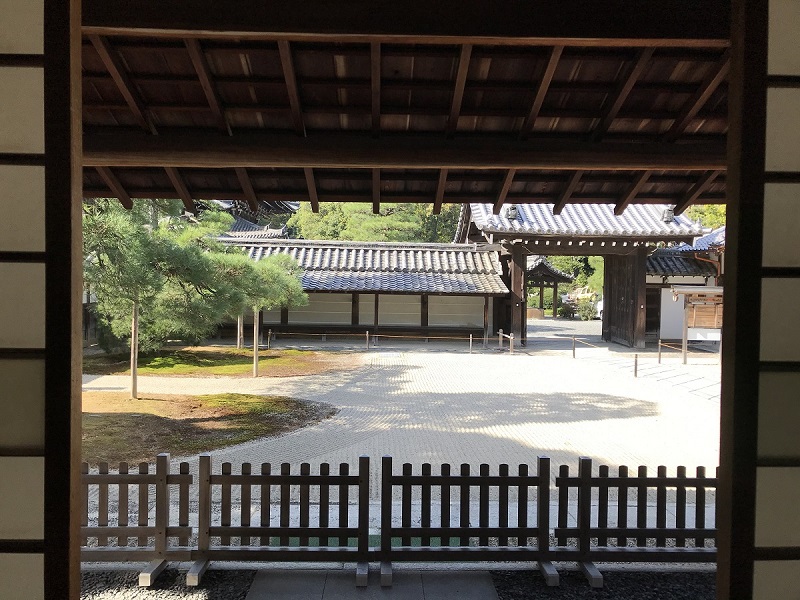
It is a resting place used by the imperial family for worship. You will be healed by the garden that you can see from Gozasho. And you will enjoy the scenery of the four seasons, such as autumn leaves and snow-covered appearance.
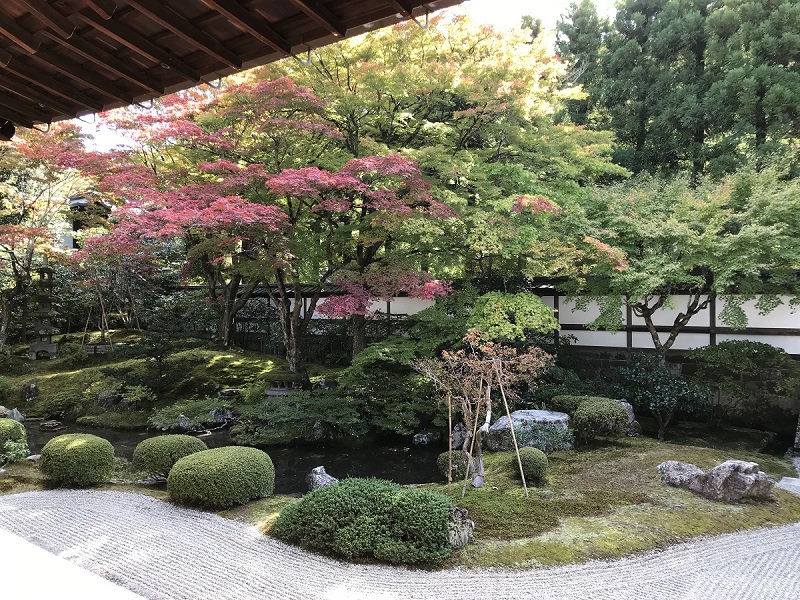
Spring water house shape
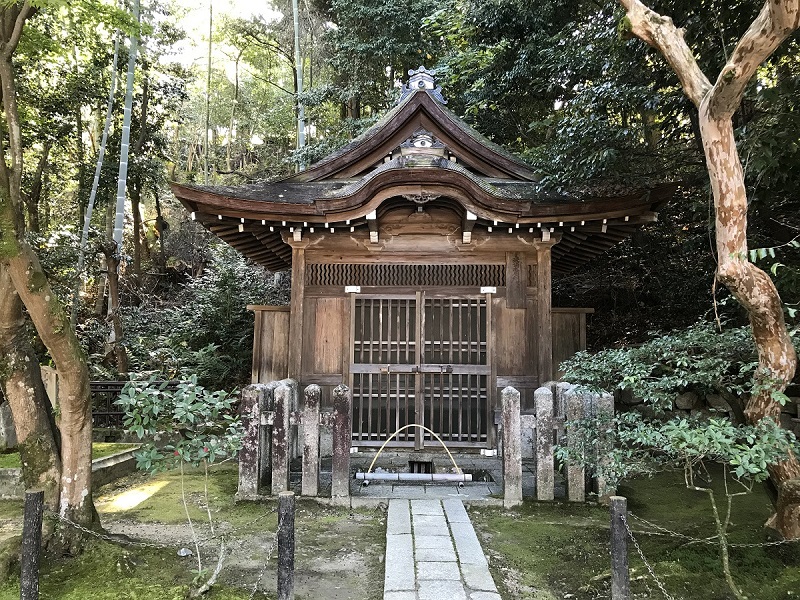
It is a house shape that covers spring water, which is the origin of the name of the temple, rebuilt in 1668. Clear water continues to spring up even Today, and you can hear the sound of pure water flowing from the house.
Location
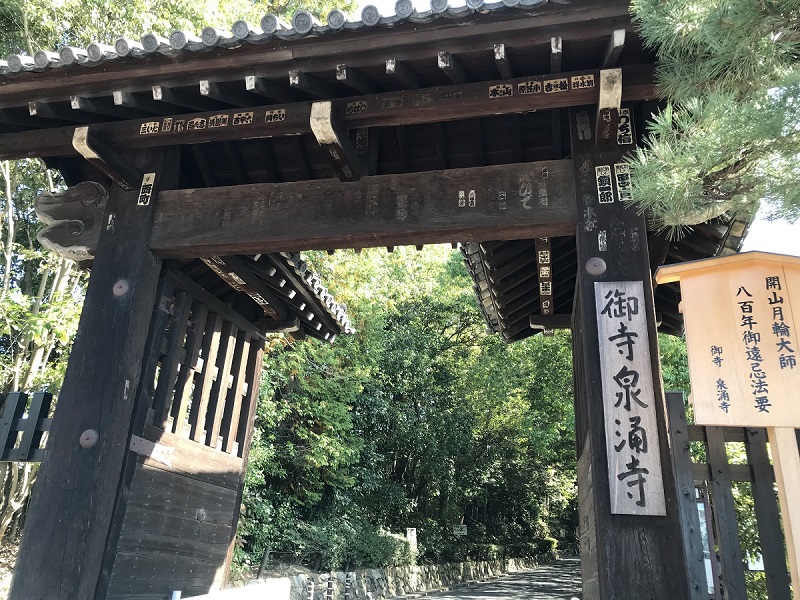
10 minutes walk from the city bus stop “Sennyuji-ji Mich”.
Click here for information of IMAKUMANO-kannon-ji Temple.